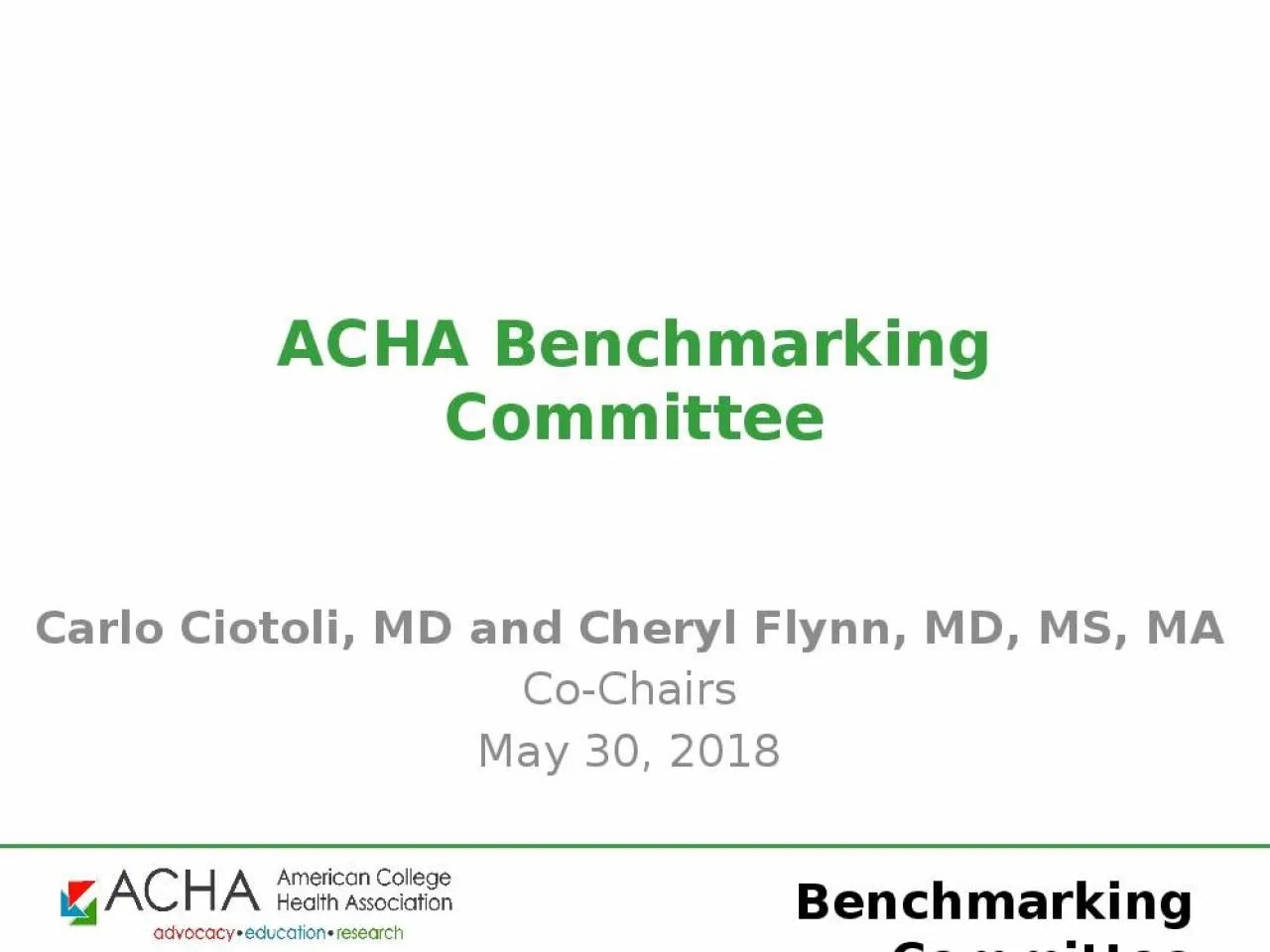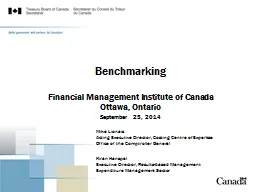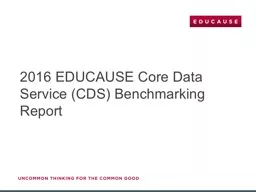PPT-ACHA Benchmarking Committee
Author : davies | Published Date : 2022-02-10
Carlo Ciotoli MD and Cheryl Flynn MD MS MA CoChairs May 30 2018 Agenda Background Board Charge Approach Why Benchmark Benchmarking surveys Clinical Prevention and
Presentation Embed Code
Download Presentation
Download Presentation The PPT/PDF document "ACHA Benchmarking Committee" is the property of its rightful owner. Permission is granted to download and print the materials on this website for personal, non-commercial use only, and to display it on your personal computer provided you do not modify the materials and that you retain all copyright notices contained in the materials. By downloading content from our website, you accept the terms of this agreement.
ACHA Benchmarking Committee: Transcript
Download Rules Of Document
"ACHA Benchmarking Committee"The content belongs to its owner. You may download and print it for personal use, without modification, and keep all copyright notices. By downloading, you agree to these terms.
Related Documents














